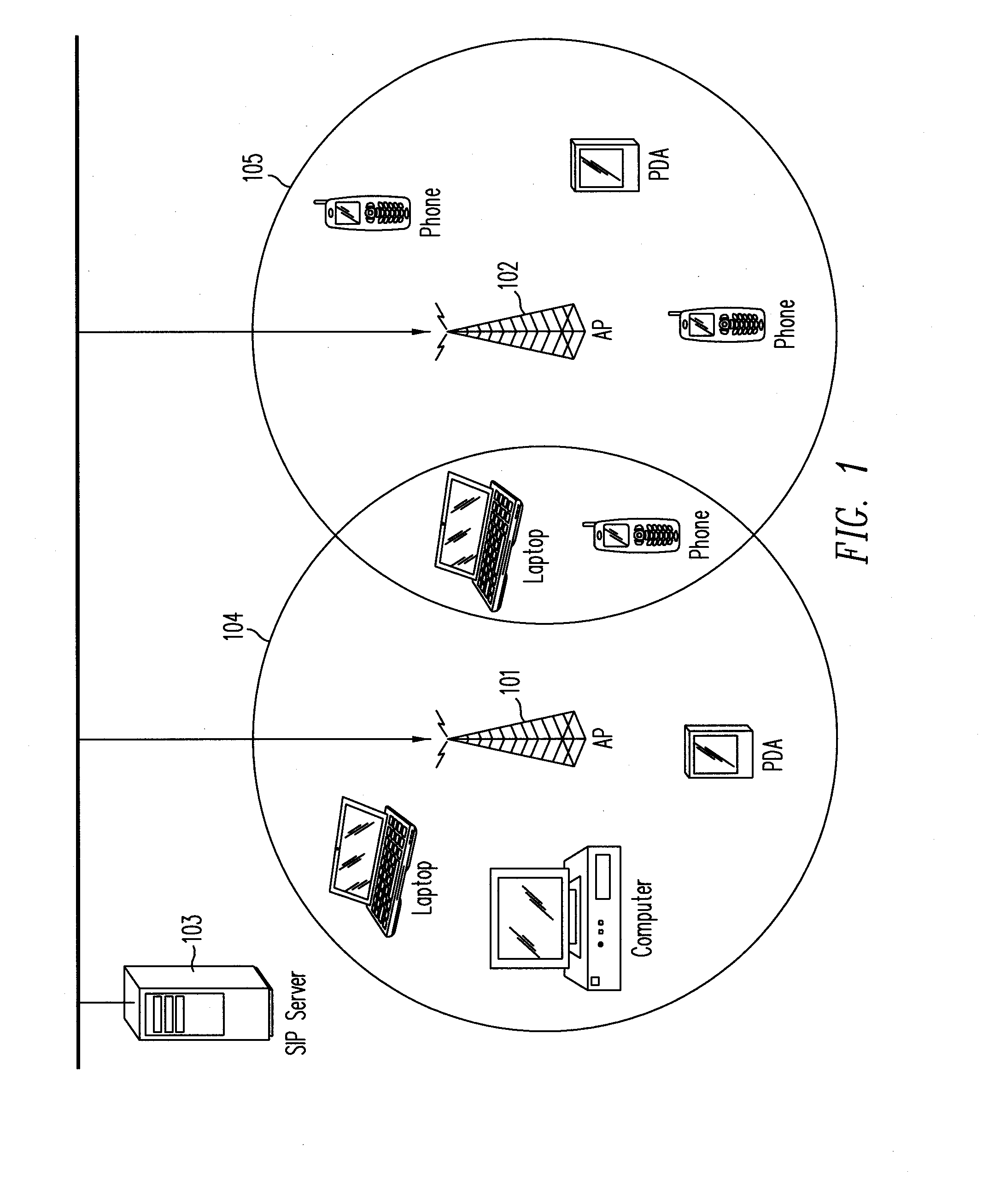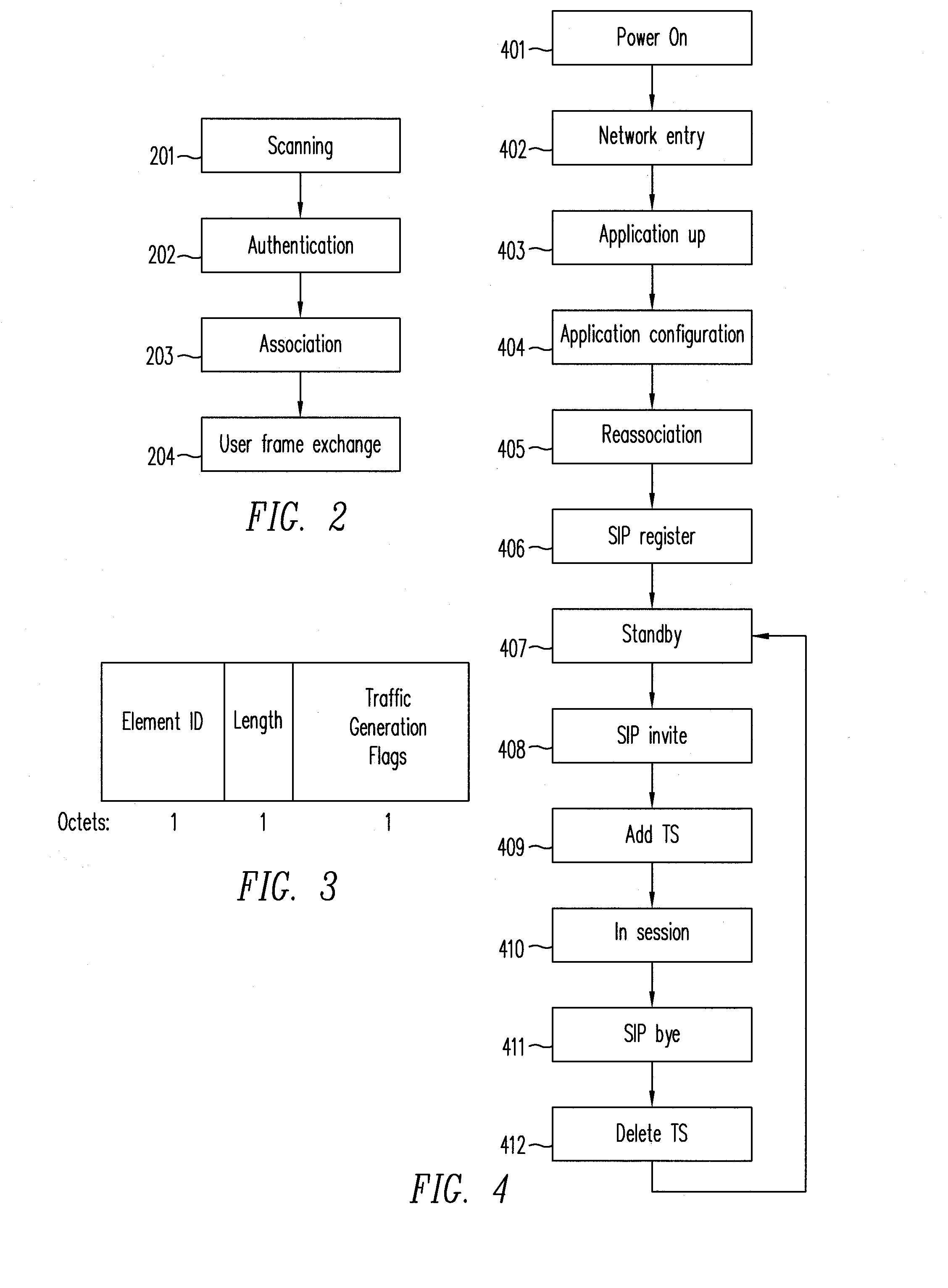Proactive Per-Class Load Management
a load management and per-class technology, applied in the field of wireless local networks, can solve problems such as the inability to change the attachment of users' network, and the inability to meet the capacity of users
- Summary
- Abstract
- Description
- Claims
- Application Information
AI Technical Summary
Benefits of technology
Problems solved by technology
Method used
Image
Examples
Embodiment Construction
[0048]The present invention provides an apparatus and a method that proactively identifies and manage the load of an 802.11 WLAN based on one or more per-class station counts. In one embodiment, the wireless stations are classified according to access categories (ACs), user priorities (UPs), or services. In another embodiment, the present invention provides an apparatus and a method that proactively identify and manage the load of an 802.11 WLAN based on per-class traffic specification (TSPECs). The TSPEC may be provisional or non-provisional depending upon the status of traffic streams (TSs).
[0049]In this detailed description, load management according to the present invention is described using as an example a VoIP service, which uses a service initiation protocol (SIP) server for session initiation. However, the present invention is applicable also to other services such as video conferencing, push e-mail, online game, and multimedia streaming. Also, the use of a SIP server is me...
PUM
 Login to View More
Login to View More Abstract
Description
Claims
Application Information
 Login to View More
Login to View More - R&D
- Intellectual Property
- Life Sciences
- Materials
- Tech Scout
- Unparalleled Data Quality
- Higher Quality Content
- 60% Fewer Hallucinations
Browse by: Latest US Patents, China's latest patents, Technical Efficacy Thesaurus, Application Domain, Technology Topic, Popular Technical Reports.
© 2025 PatSnap. All rights reserved.Legal|Privacy policy|Modern Slavery Act Transparency Statement|Sitemap|About US| Contact US: help@patsnap.com



